9 things announced at the Meta Connect 2023 event
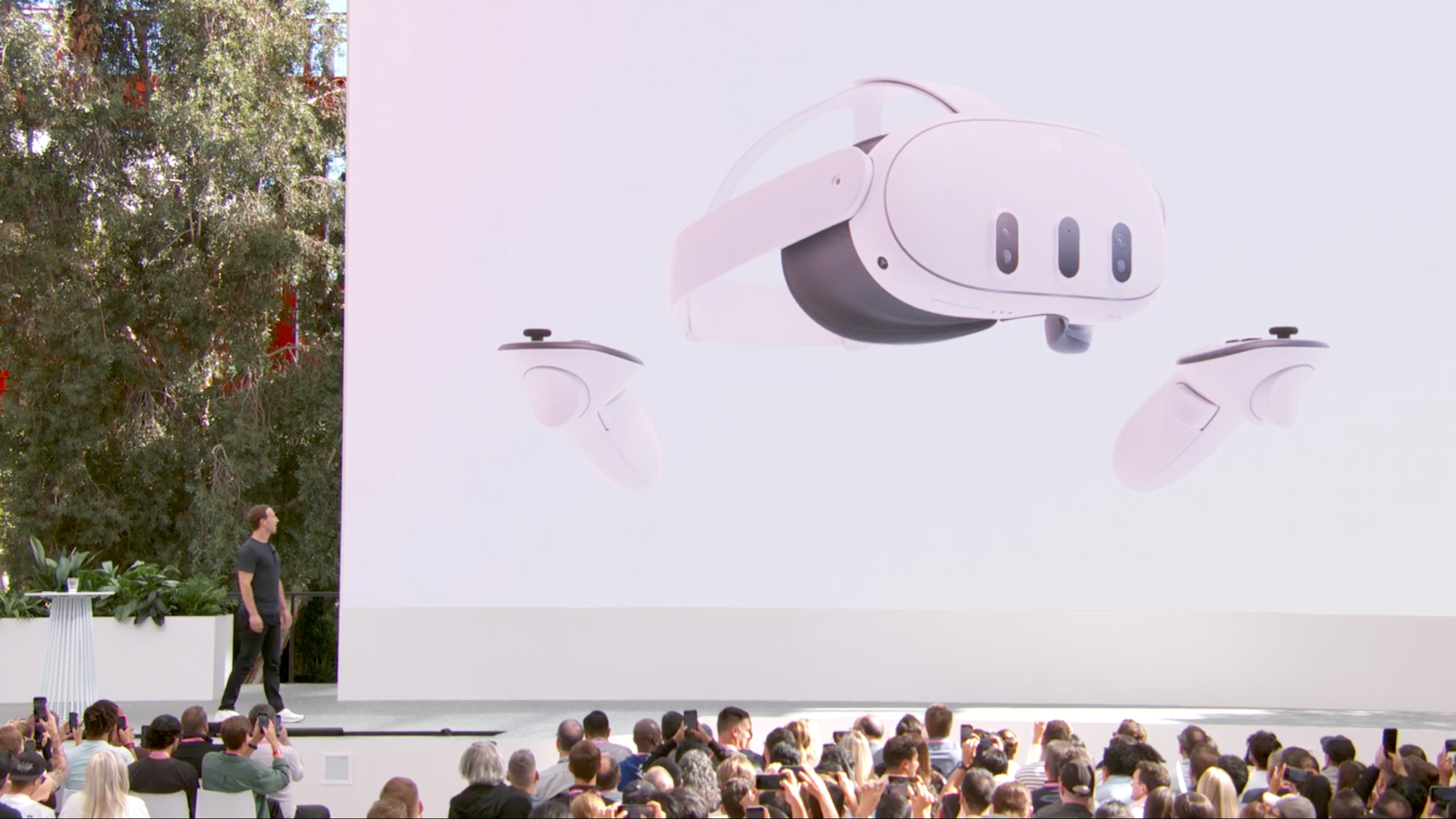
Meta’s Connect developer conferences have been fairly humble these past couple of years as the company shifted to online events due to the pandemic. But for 2023, the tech giant returned to an in-person event and took some big swings.
During the keynote, we received a ton of new information regarding the Meta Quest 3 VR headset, Meta's generative AI projects, and the next generation of Ray-Ban smart glasses.
The star of the show was undoubtedly the Quest 3. It features improved hardware running on the Snapdragon XR2 Gen 2 SoC (system on a chip), an in-depth mapping upgrade, and greater support for video games. The reveal was certainly impressive. However as the conference went on, it felt like the spotlight shifted to all the AI announcements.
We’ve known some of the AI models Meta has been developing for a while now, like its revamped chatbot to take on GPT-4. But as it turns out there was a lot more going on behind the scenes as the company showed off a slew of AI features coming to its messaging apps.
There is a lot to cover, so if you want to know about a specific topic, you can use the jump links at the top to head over to a particular section. Or you can read the whole thing as it happened.
Virtual Reality
1. Meta Quest 3
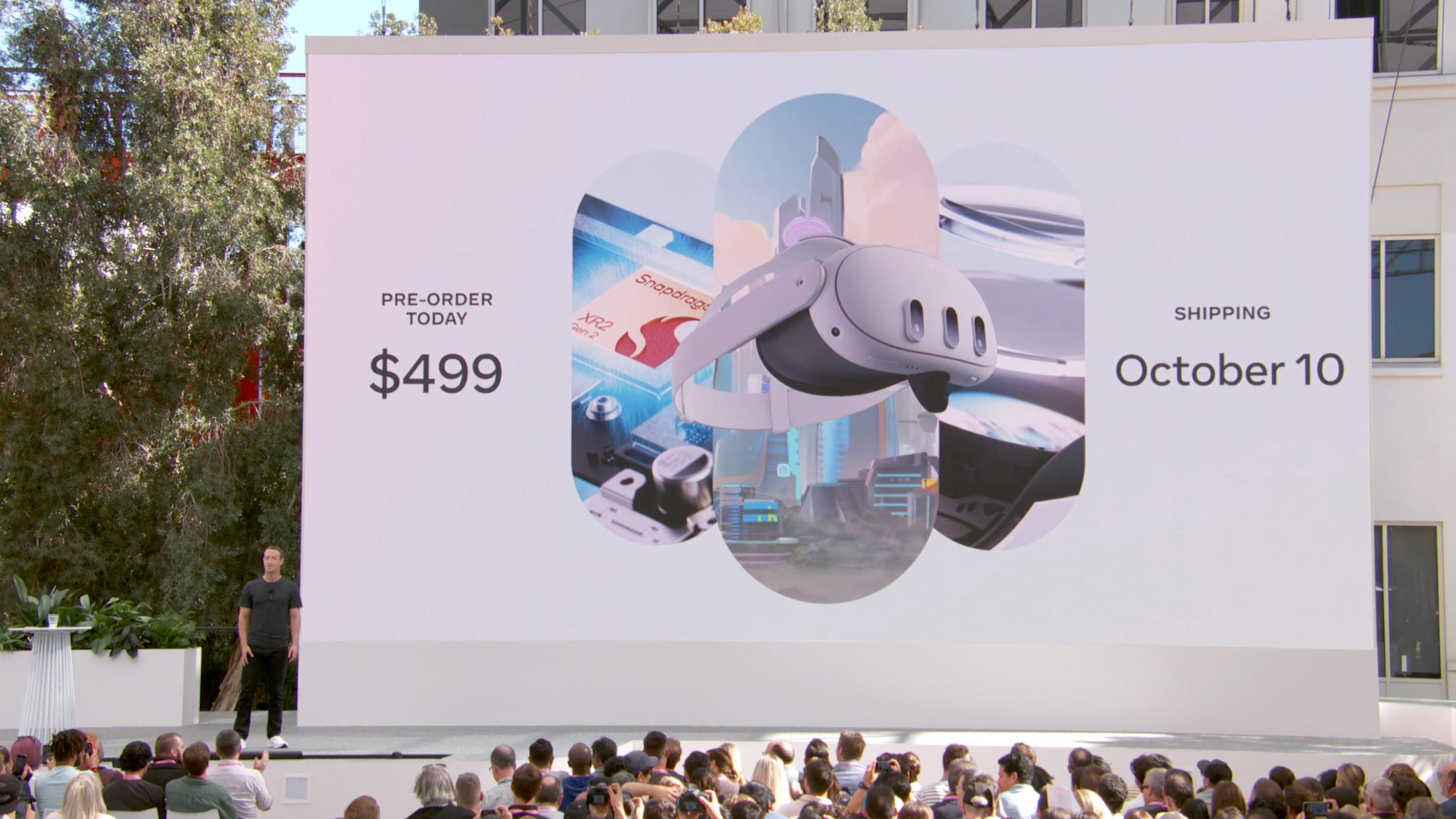
- $499.99 / £479.99 / AU$799.99
- Available for pre-order
- Launches October 10
We finally get a look at the Meta Quest 3 VR headset after months of leaks. Compared to the Quest 2, this new model is 40 percent thinner thanks to the pancake lenses allowing for a slimmer design, according to company CEO Mark Zuckerberg. Each lens is able to output 4K resolution (2,064 x 2,208 pixels) per eye for the highest quality possible. The speakers are getting an upgrade too. They now have a “40 percent louder volume range than Meta Quest 2”.
All this will be powered by the Qualcomm Snapdragon XR2 Gen 2 chipset mentioned earlier, which is said to be capable of twice “the graphical performance.”
Sign up for breaking news, reviews, opinion, top tech deals, and more.
Also, the headset is paired up with two Touch Plus Controllers now boasting better haptic feedback for more immersive gaming. The Quest 3 is currently available for pre-order on Meta’s official website (in Australia, you can even pre-order from Amazon). Prices start at $499.99 / £479.99 / AU$799.99 for the 128GB model while the 512GB headset is $649.99 / £619.99 / AU$1,049.99. It ships out on October 10.
2. Better gaming
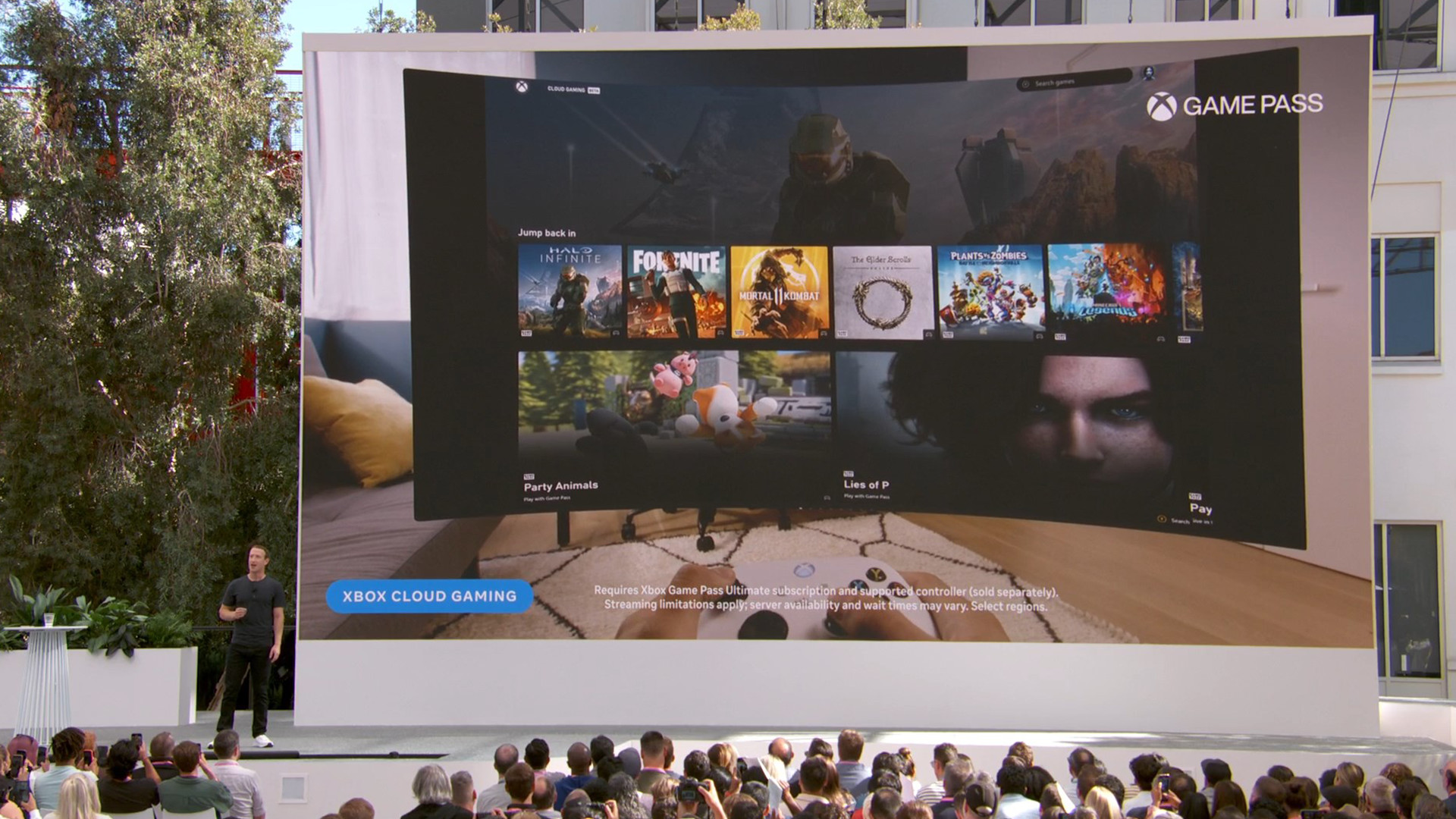
- Xbox Cloud Gaming coming in December
- No longer need a PC
- Some titles will be in mixed reality
A large portion of Zuckerberg’s presentation was dedicated to gaming as Meta wants gamers to adopt its headset for a fresh, new experience. To enable this, Xbox Cloud Gaming will be accessible on the Quest 3 this December. This means you can play Halo Infinite or Minecraft on an immersive virtual screen. And the best part is you no longer need to connect to a gaming PC to run your favorite titles. Thanks to the Snapdragon chip, the headset is now powerful enough to run the latest games.
For greater interactivity, some titles like BAM! can be played on a table in your house through a mixed reality environment. The Quest 3 will display the board game in front of you while you still see the room around you.
3. Immersive environments

- Will automatically map your room
- Virtual objects appear
- Can switch between immersive and blended spaces
Mixed reality is made possible due to the Quest 3’s “full-color passthrough capability and a depth sensor”. The device will scan a room, taking note of the objects in it in order to set up a mixed-reality space. This is all done automatically, by the way. Through this, virtual objects will appear in your house.
Besides video games, the mixed reality spaces can be used to establish your own immersive workout or meditation area. For basketball or MMA fans, you can get ring-side seats where you can watch your favorite teams or fighters duke it out as if you’re there. Double-tapping the headset on the side changes the view from an immersive perspective to a wide-angle shot where you can see everything.
Generative AI
4. Meta AI assistant
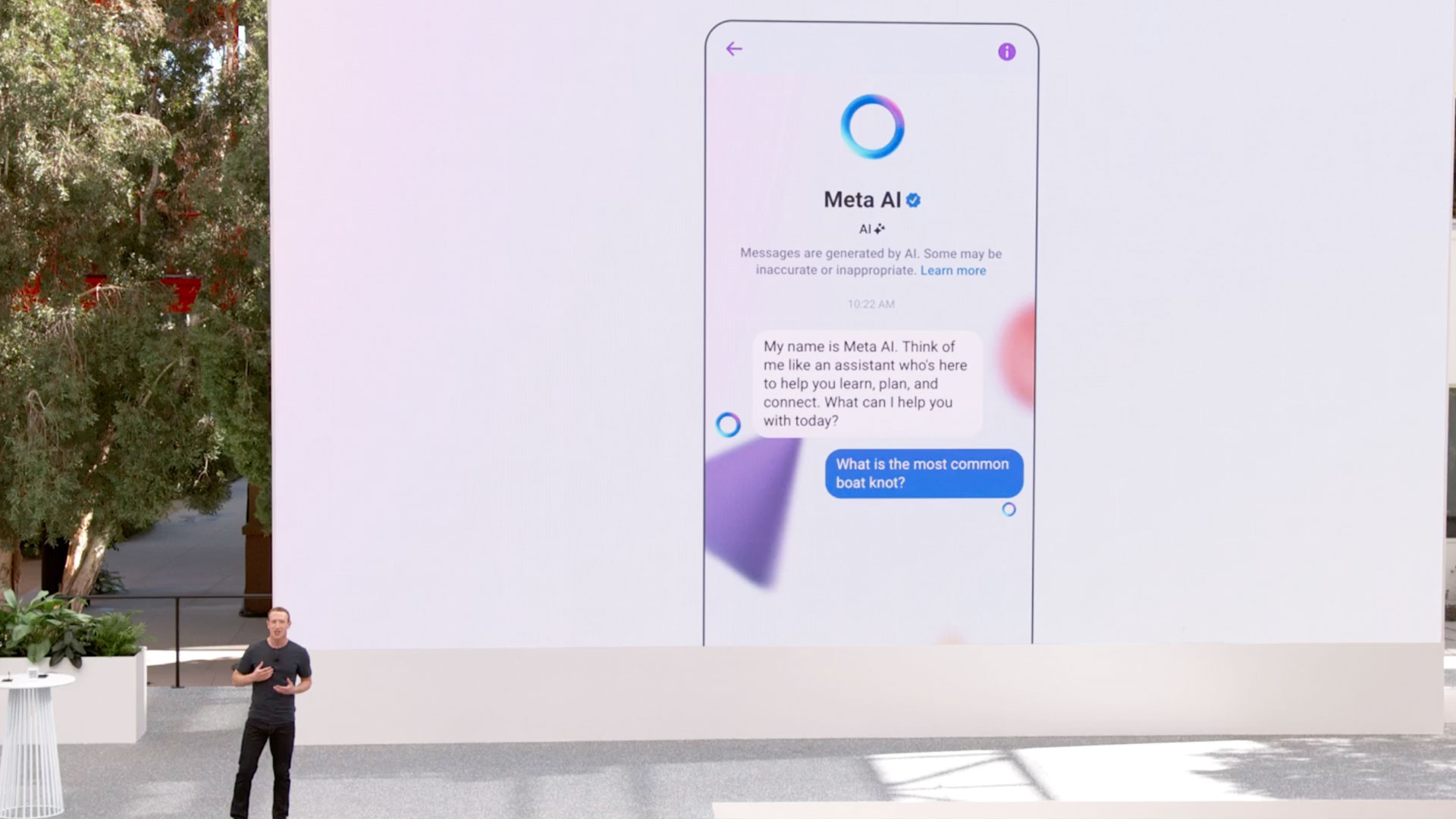
- Powered by Bing Chat
- Will be available on WhatsApp, Instagram, and more
- Can access the internet
Mark Zuckerberg revealed Meta has entered a partnership with Microsoft allowing the former to use Bing Chat as the basis for their new in-app assistant called Meta AI. It works in much the same way. You can ask quick questions or engage with it in some light conversation.
What’s interesting is it’ll be available on Facebook, Instagram, Messenger, and WhatsApp. It will have access to the internet for displaying real-time information. Enabling this can backfire as it may cause the AI to hallucinate or come up with false information. To combat this, Meta states it carefully trained its AI to stay accurate.
It’s unknown when the assistant will launch officially; although we did ask. We should mention it will be available in beta on the upcoming second-generation Ray-Ban smart glasses which launches in October.
5. Multiple personalities
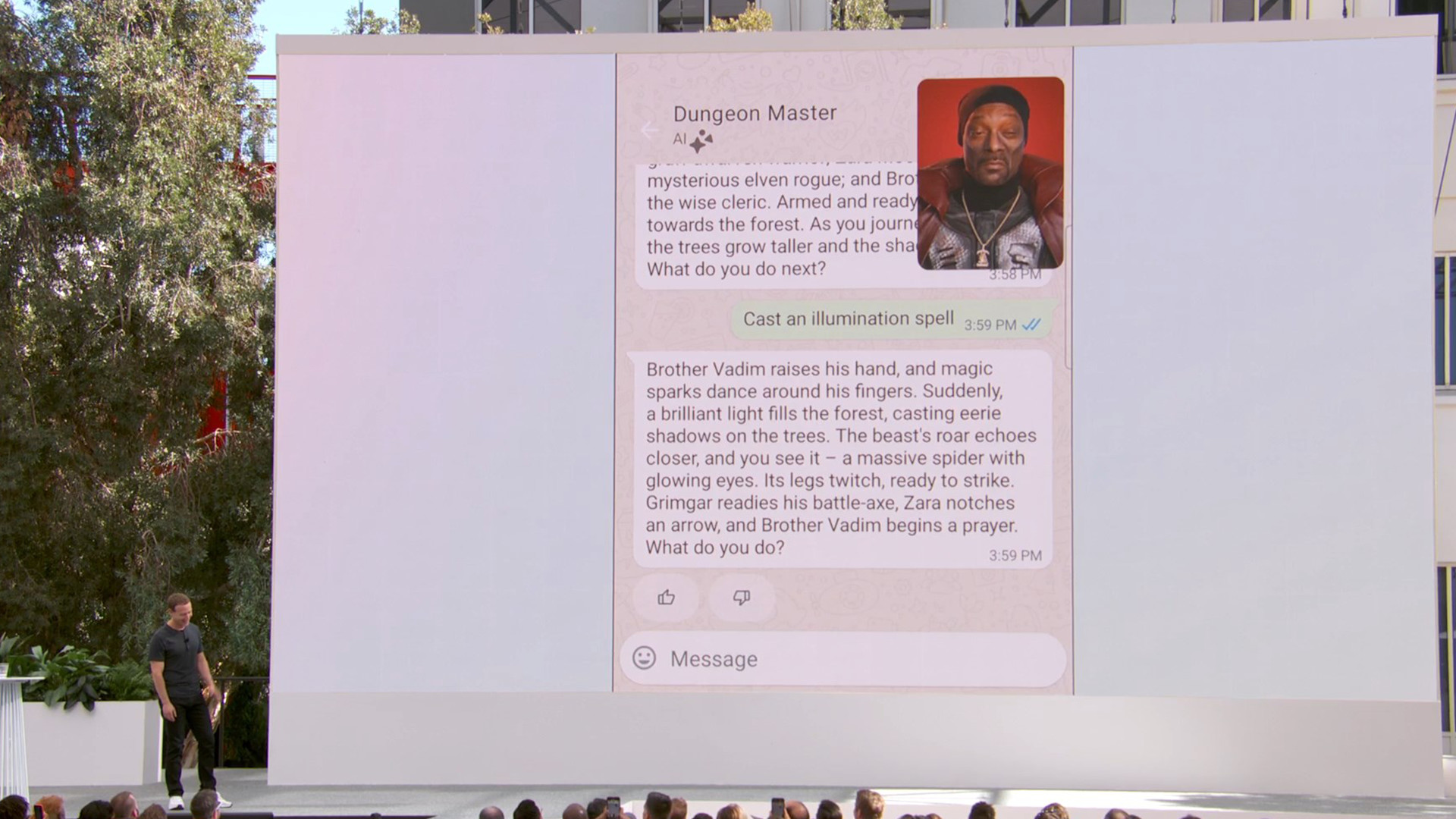
- AI Assistant can have a persona
- These persona can offer specific advice
- Or be a source of entertainment
It seems Meta AI will have split personalities as it'll be possible to have it emulate a certain persona. Each one is based on a famous public figure. For example, Victor the fitness coach is based on basketball star Dwayne Wade. Seemingly, each persona will appear with a video of the celebrities in the corner. The video is connected to the AI and will emote according to the text.
The personas do get a little wacky. Rapper Snoop Dogg gave his likeness to be the Dungeon Master model guiding people through a choose-your-own-adventure text game. Others have a more practical use like the chef AI giving cooking advice.
6. Generating images
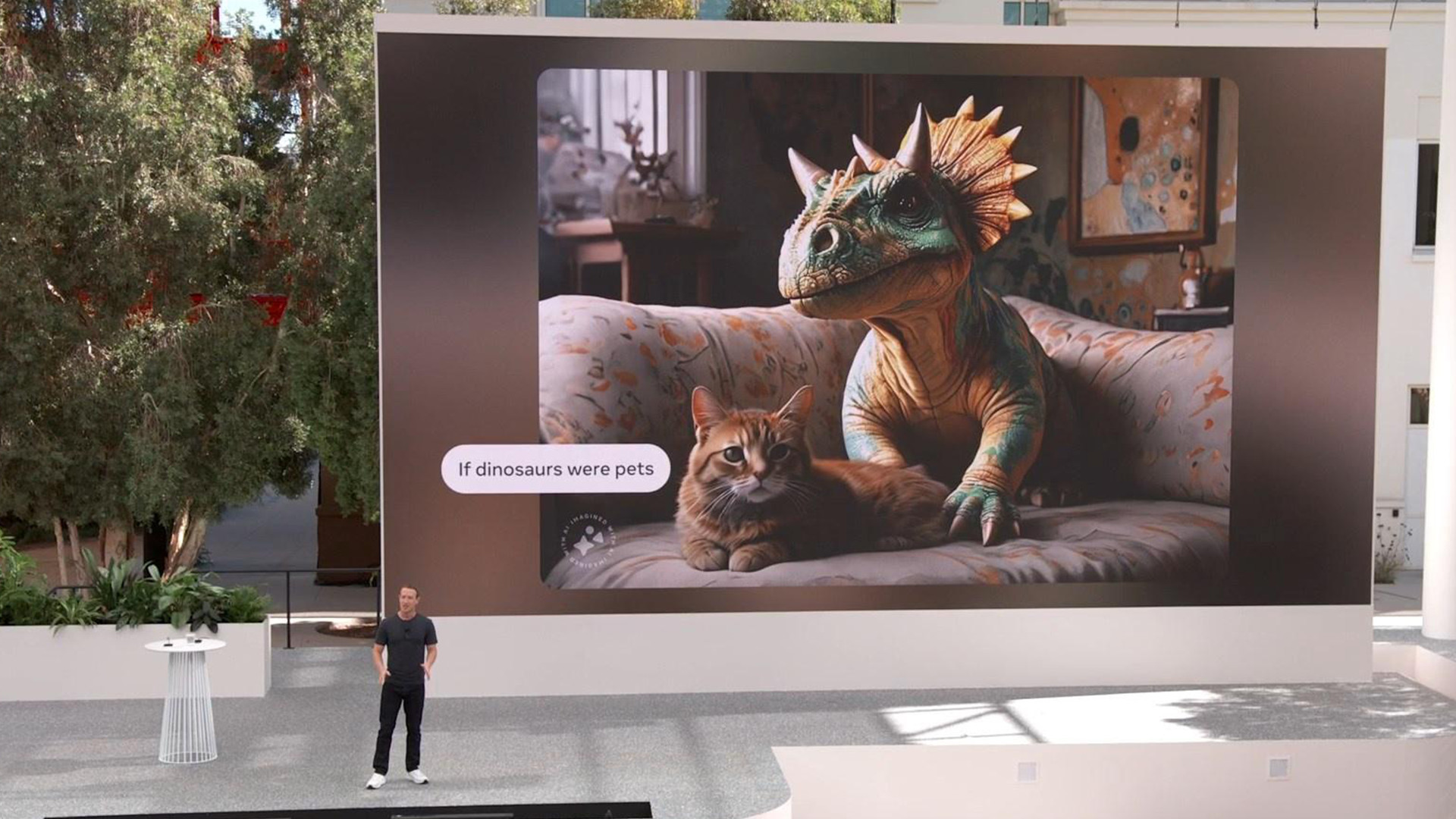
- Emu can generate high quality images
- Can be accessed through Instagram and WhatsApp
- Can generate stickers in three seconds
Emu, or Expressive Media Universe, is Meta’s new image generation engine. Like others of its kind, Emu is capable of pumping out high-quality images matching a specific text prompt. However, it will do so in five seconds flat – or so Mark Zuckerberg claims. What’s unique about this engine is it will power content generation on Meta’s other apps like Instagram and WhatsApp.
On the two platforms, Emu will allow users to create their own stickers for group chats in about three seconds. Generating images will require you to enter a forward slash and then a prompt such as “/image a sailboat with infinite sails.” This technology is being used on Instagram to generate unique backgrounds and new filters.
7. AI Studio
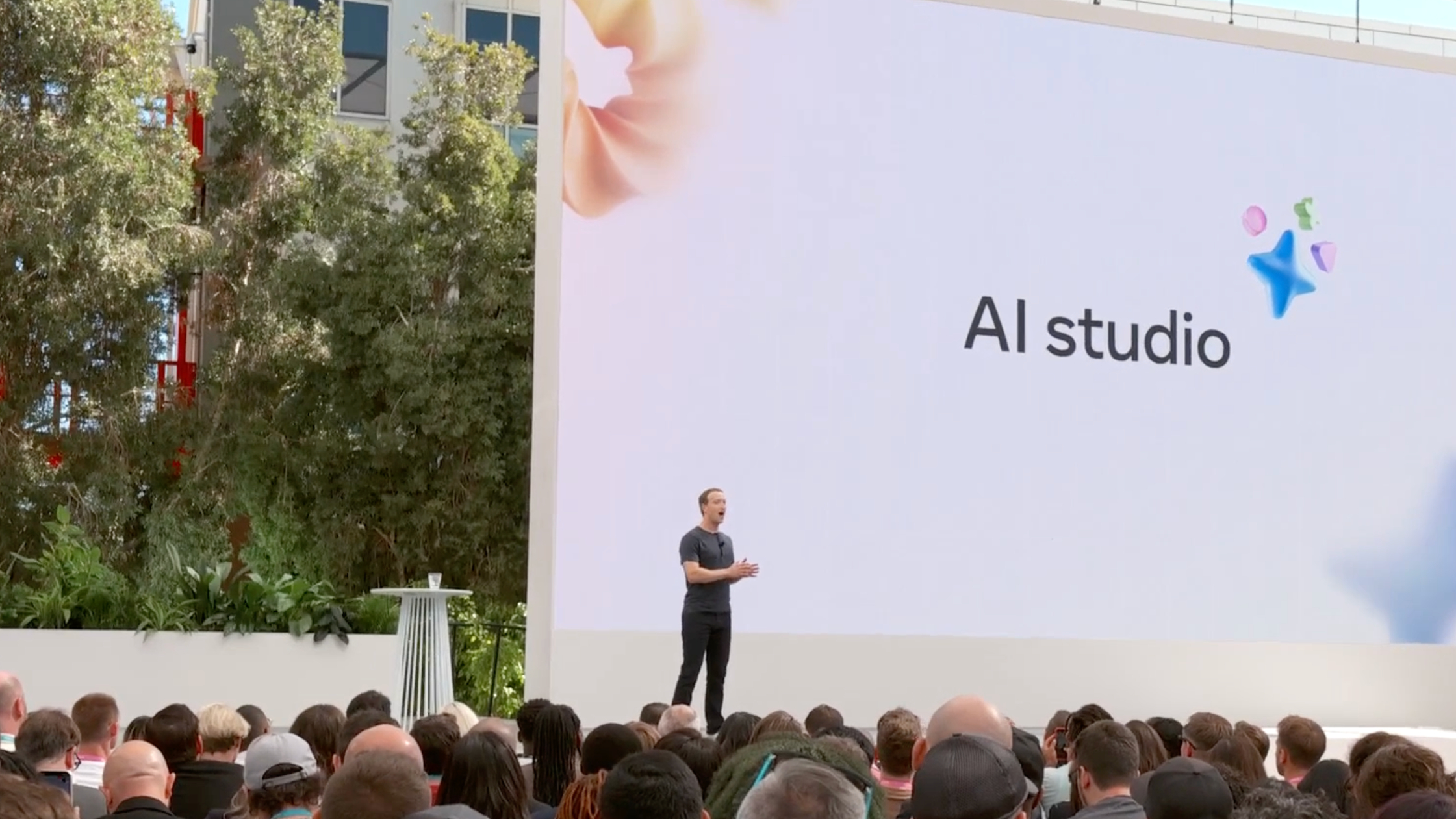
- User will be able to make their own AI
- Sandbox kit will it easy to create models
- Sandbox launches next year
Meta is opening the door for people to come in and make their AI via the AI Studio platform. Within the coming weeks, developers can get their hands on a new API that they can use to build their very own artificial personality. Non-programmers will get the opportunity to do the same through a company-provided sandbox. However, it’ll be a while until it sees the light of day as it won’t roll out until early 2024.
The tech giant explains that with this tech you can create your own NPCs (non-player characters) for Horizon Worlds.
8. Next-gen Ray-Bans

- $299 / £299 / AU$449
- Available in 15 countries
- Launches October 17
Near the end of his presentation, Mark Zuckerberg announced the next generation of Ray-Ban smart glasses now sporting better visual quality, better audio, and more lightweight body. On the corners of the frames will be two 12MP ultra wide camera lenses capable of recording 1080p video. It has 32GB of storage allowing you to store over 100 videos or 500 photos, according to Meta.
What’s more is it comes with a snazzy-looking leather charging case similar to the kind you get with a normal pair of Ray-Bans. With the case, the Ray-Ban smart glasses can last up to 36 hours on a single charge.
It’s currently available for pre-order for $299 in either Wayfarer brown or Headliner black in the US. It launches October 17 in 15 countries, “include the US, Canada, Australia, and throughout Europe.”
9. Livestreaming

- Can connect to Instagram for livestreaming
- Touch control activate certain features
Meta is giving its next-gen smart glasses the ability to livestream directly on Instagram and Facebook. In the demonstration, a new glasses icon will appear on the app’s video recording section. Turning on the icon and double-tapping the side of the glasses will connect the device to the app so viewers can see what you’re seeing.
Additionally, tapping and holding the side of the frame lets you hear the latest comments out loud through their internal speakers. That way, streamers can stay in touch with their community.
This feature will be available when the updated Ray-Bans launch next month.
And that’s pretty much the entire event. As you can see, it was stacked. If you want to know more, be sure to check out TechRadar’s hands-on review of the Ray-Ban smart glasses.
You might also like

Cesar Cadenas has been writing about the tech industry for several years now specializing in consumer electronics, entertainment devices, Windows, and the gaming industry. But he’s also passionate about smartphones, GPUs, and cybersecurity.